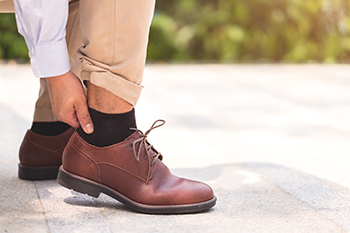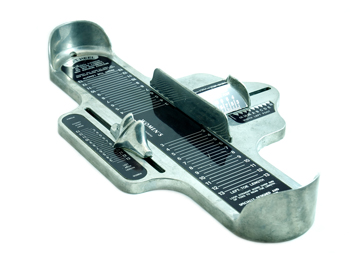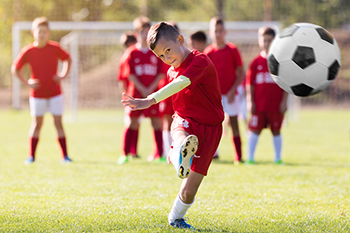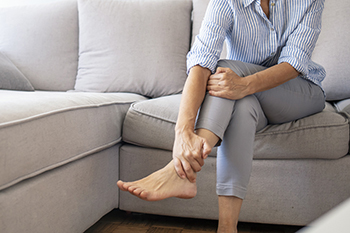
If you have tarsal tunnel syndrome, then you might feel a particular kind of pain in the sole, or bottom, of the foot. This pain might be most pronounced during weight-bearing activities. Anyone with this condition ought to see a podiatrist to receive immediate medical attention and treatment. However, to relieve this pain, there are a number of different exercises that one might perform. First, you might consider performing ankle rotations. While in a seated position, lift one leg and rotate the ankle slowly. It is important to perform this exercise on the affected foot. Additionally, to relieve pain from tarsal tunnel syndrome, consider performing pencil lifts. This exercise can be performed by picking up a pencil with the toes, holding it, and then releasing it. This strengthens muscles in the feet. Tarsal tunnel syndrome is nothing to joke about. Contact a podiatrist today for more information on easing the pain through exercises.
Tarsal tunnel syndrome can be very uncomfortable to live with. If you are experiencing tarsal tunnel syndrome, contact one of our podiatrists of Illinois . Our doctors can provide the care you need to keep you pain-free and on your feet.
Tarsal Tunnel Syndrome
Tarsal tunnel syndrome, which can also be called tibial nerve dysfunction, is an uncommon condition of misfiring peripheral nerves in the foot. The tibial nerve is the peripheral nerve in the leg responsible for sensation and movement of the foot and calf muscles. In tarsal tunnel syndrome, the tibial nerve is damaged, causing problems with movement and feeling in the foot of the affected leg.
Common Cause of Tarsal Tunnel Syndrome
- Involves pressure or an injury, direct pressure on the tibial nerve for an extended period of time, sometimes caused by other body structures close by or near the knee.
- Diseases that damage nerves, including diabetes, may cause tarsal tunnel syndrome.
- At times, tarsal tunnel syndrome can appear without an obvious cause in some cases.
The Effects of Tarsal Tunnel Syndrome
- Different sensations, an afflicted person may experience pain, tingling, burning or other unusual sensations in the foot of the affected leg.
- The foot muscles, toes and ankle become weaker, and curling your toes or flexing your foot can become difficult.
- If condition worsens, infections and ulcers may develop on the foot that is experiencing the syndrome.
A physical exam of the leg can help identify the presence of tarsal tunnel syndrome. Medical tests, such as a nerve biopsy, are also used to diagnose the condition. Patients may receive physical therapy and prescriptive medication. In extreme cases, some may require surgery.
If you have any questions please feel free to contact our offices located in Wheeling and Berwyn, IL . We offer the newest diagnostic and treatment technologies for all your foot and ankle needs.










